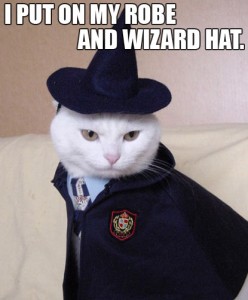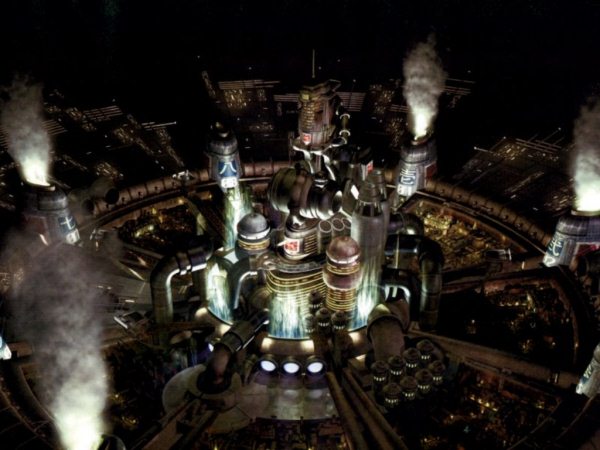Dungeons and Deathstars
Role-playing games (RPG’s) date back from a time well before the commodore 64 and other ancient home consoles squatted in front of your TV. The first inception of the RPG as we know it can be dated back to the first pen and paper (P&P) board games such as the well known Dungeons and Dragons. When you mention D&D to your average attractive young lady it is considered a bigger social fopar than describing in detail the last time you made passionate love to your hand. So people may consider you a geek but without these types of games the RPG genre would not have migrated over to the games console medium. So that we can be thankful for, and besides, at least the hand never has a headache.
After that very brief lesson in how RPG’s made their way over to the home console I’ll quickly move on to why that is relevant. On consoles, RPG’s have a distinct two flavours. We have the W-RPG (Western RPG) and the J-RPG (Japanese RPG). These should be easy to distinguish for anyone who’s had a console for longer than a day. For W-RPG’s we have big open-world romps through lovely greenery like The Elder Scrolls: Oblivion and for J-RPG’s we have story intensive epics in brooding like Final Fantasy VIII. It’s usually easy to distinguish which RPG you play comes from which continent by characters, setting, dialogue and general box art. Seen as though it would take a thesis to discuss each of these points I chose one resounding factor that runs through them all and that is setting.

Setting encompasses and affects a hell of a lot of areas in the game. It’s what the villages, cities and towns look like, the way people dress, the way they talk, technology, so on and so on. All of these elements work together to give the game authenticity, to make you feel like you’re there and ‘immerse’ you, whatever that means.
My problem with all this is that since the days of D&D all the way up to now, 80% of RPG’s out there fall into one of two categories. You’re either in a Tolkien-esque imagining of the Middle Ages or a George Lucas-esque view of some undeterminable time in the future. If I’m told on my very 1st quest of the former of these RPG’s to kill another damn rat that is in a tavern or kitchen I’ll find the developer and force them to replay that quest till they go so insane they think they are the rat. Quivering and crapping themselves as I chase them with an inflatable hammer around their house. Can’t the developers think of something more original? As far as the owners of the tavern go, get some traps or poison, don’t charge some maniac clothed in a linen pantsuit and rusted iron club to do the job for you. With sci-fi RPG’s it is something similar, like some space rats. I get that from a mechanic and levelling point of view you’re at a low level so it may make sense to fight smaller opponents and work your way up the levelling food chain. It doesn’t make for innovative game-play though and can work to put a player off.
This doesn’t mean that games with this setting are bad. Some of the best games I’ve played such as Elder Scrolls, Dragon Age, and Mass Effect conform to this archetypal setting, the story, characters and mechanics make up for the scenery. My problem is having the genre in such black and white divisions. Why not have an RPG set in the 18th century with people wearing six-foot wigs, and your main quest is to woo a young debutant at a ball with a side-quest of not dropping your embroidered hanky and looking like a tw*t. Battles could be turn-based insults using incomprehensible gibberish ending in a finishing move where the enemy is disgraced and hangs himself from a chandelier and we all share a laugh.

Looking at this from a commercial point of view there are obviously advantages in choosing either the black or the white. Some people’s pants tighten so hard at the Middle Ages that all the blood drains from their faces and they collapse in a pool of their own saliva. Due to the fact that RPG’s took their influence from D&D which in itself was mainly centred on a Tolkien-esque setting, this then transferred over. When these games were first being developed it was a large community of D&D developers and enthusiasts that were called in. Also we can see a direct influence from films like Star Wars in any RPG set in space. Due to the fact that this had become the staple so long ago their repercussions are still being felt today. This is not only because of RPG’s that preceded them but also in TV and literature. These settings have stood the test of time and therefore have become bankable and visually imaginable situations that developers can work with. Perhaps in envisaging a new and imaginative setting an artist would immediately skewer his eye with a pencil at the sure incredulity of the brief. This gives credence to the fact that most studios and investors want to go with a game that has the makings of something that has been tried and tested.
There have been exceptions to the rule though. When I think of games I have played that have chosen to break this archetype and done so successfully, there are only a handful and all batting from the J-RPG corner. Final Fantasy VII would be a prime example that pulled this off flawlessly. It gave the audience an imagining of a contemporary dystopia that drew on gothic and cyber-punk influences. Up till that point, I had played various other RPG’s over different platforms but none of them had the visual presence that game still has. In those terms it broke the mould for me. This contemporary visual style lasted for Final Fantasy VIII, which mixed some more archaic architectural styles which changed the visual feel nicely. This, however, didn’t last and got drawn back into the same stone houses and greenery which sucks. The games were still good, but visually they fell into an all too familiar category.
Good games are still being produced but the only problem is that they all start to look the same; there is nothing visually there to distinguish them. Stand Neverwinter Nights, World of Warcraft and Baldur’s Gate next to each other and although they may be good games, the buildings look the same and everyone dresses like a farmer. The same could also be said for Sci-fi games. I see so many monochromatic grey sliding doors and space cadets that I’m convinced the game companies are selling me the same product with a different title. If this keeps going on, I feel at the first chance I get, I’ll take my avatar and open the blast doors hurling them and the whole brigade of marines out into oblivion. That’ll teach ‘em.
